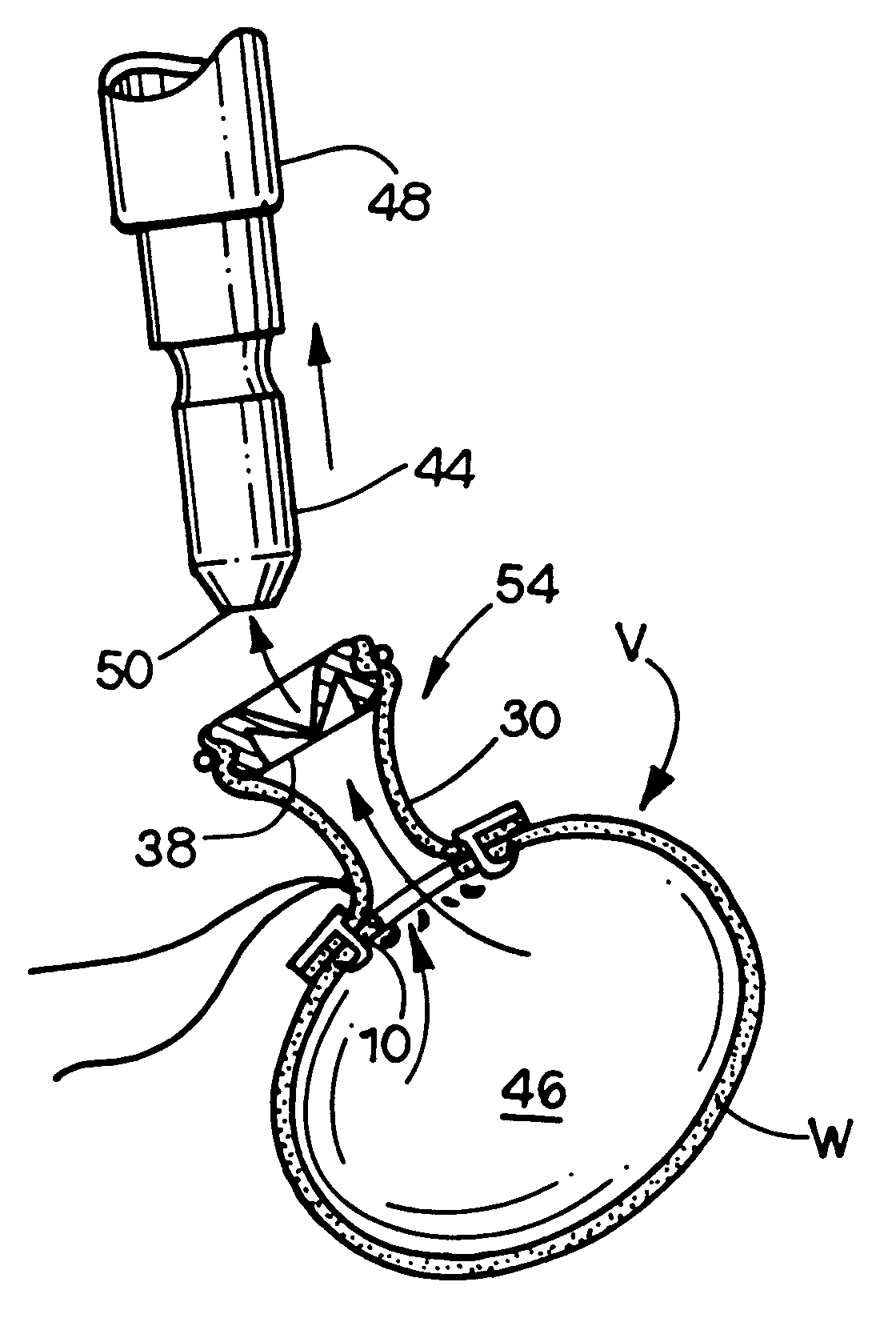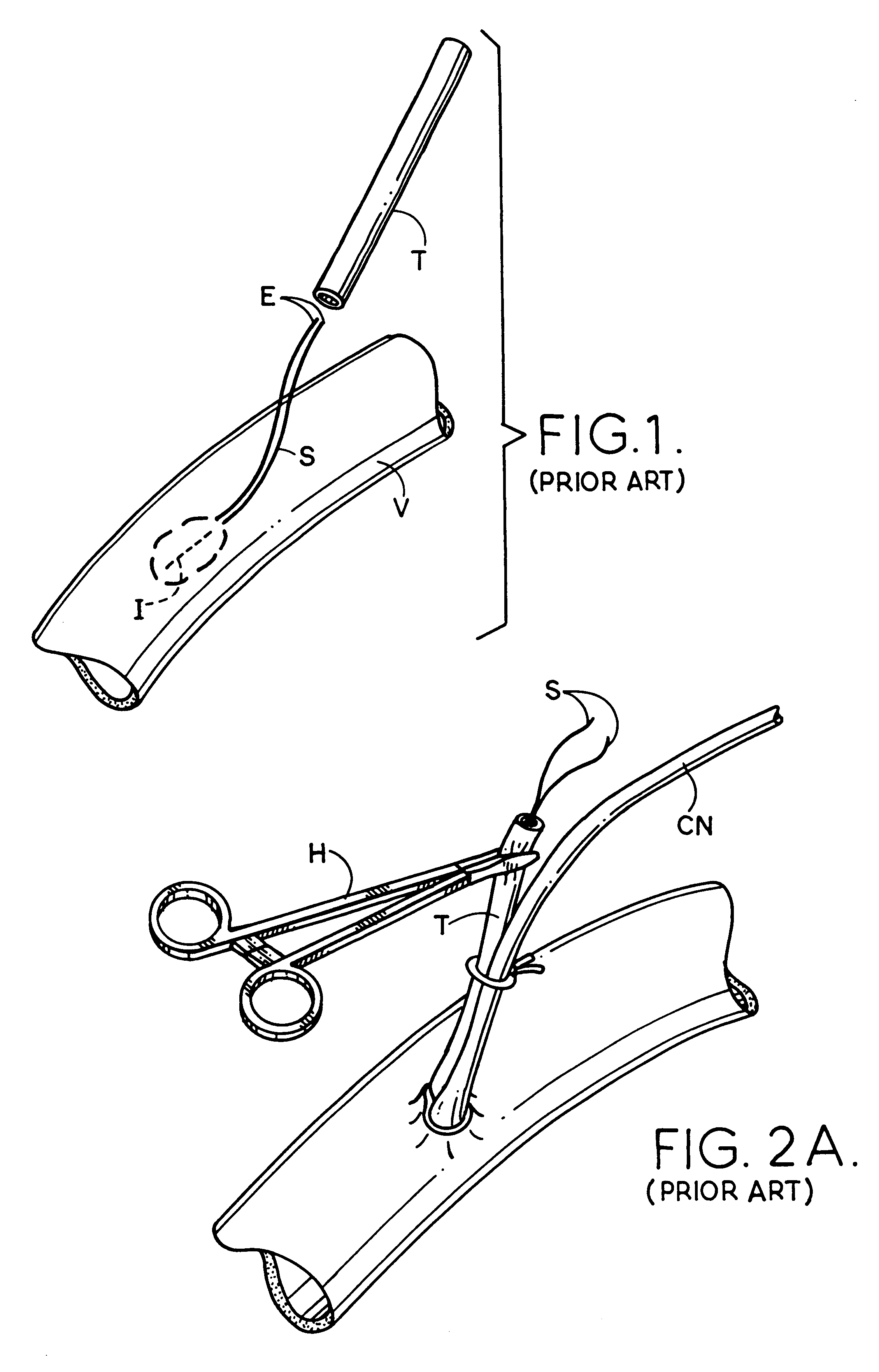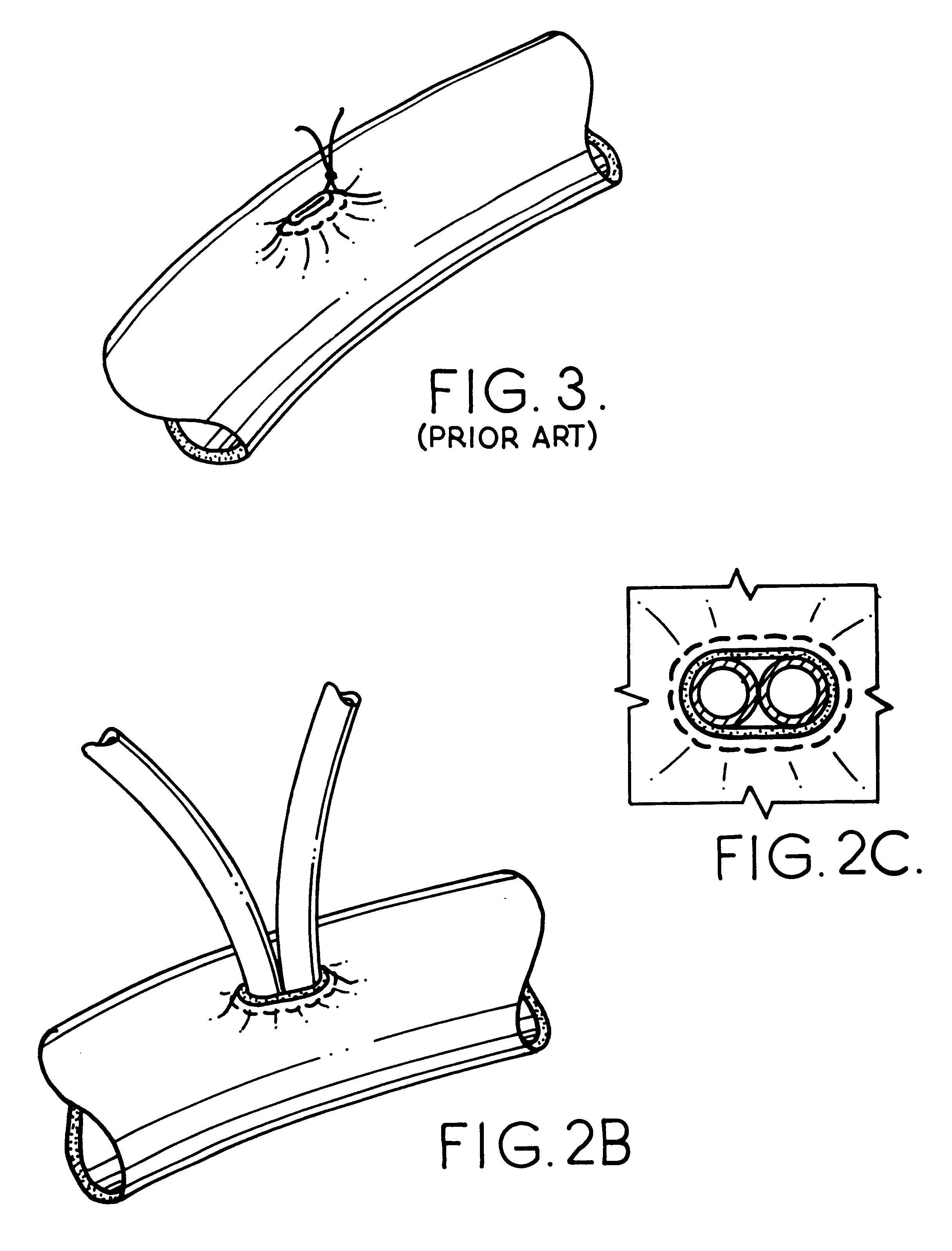Access and cannulation device and method for rapidly placing same and for rapidly closing same in minimally invasive surgery
a cannulation device and minimally invasive surgery technology, applied in the field of access and cannulation devices and methods for rapid placement and rapid closing of same in minimally invasive surgery, can solve the problems of obviating the need, requiring a considerable incision or port to conduct the operation, and difficult manipulation, so as to reduce or eliminate the problem of requiring a large incision or port, the type of access and cannulation can be easily selected, and the effect of reducing or eliminating
- Summary
- Abstract
- Description
- Claims
- Application Information
AI Technical Summary
Benefits of technology
Problems solved by technology
Method used
Image
Examples
Embodiment Construction
By way of background, the prior art method of cannulating a vessel will be described so the present invention will be appreciated. Referring to FIGS. 1-5, it can be understood that current surgical procedures employ a purse-string suture to tighten the tissue around a cannula tip. The procedure will be described below.
An incision I will be made in the wall of a vessel V. Before incision I is made, a running monofilament or braided suture S is made in a circle around an area that is approximately one to three cm in diameter. Ends E of sutures S are then fed through a piece of tubing T which is used as a garrote. Incision I is then made in the center of the circle of the stitches and the tip of cannula CN is inserted through the incision into the interior or vessel V.
The purse-string sutures are then pulled up tight while pushing down on tube T so the tissue is gathered and tightened down on cannula CN adjacent to the tip thereof. A hemostat H is then clamped onto the tube T which in ...
PUM
 Login to View More
Login to View More Abstract
Description
Claims
Application Information
 Login to View More
Login to View More - R&D
- Intellectual Property
- Life Sciences
- Materials
- Tech Scout
- Unparalleled Data Quality
- Higher Quality Content
- 60% Fewer Hallucinations
Browse by: Latest US Patents, China's latest patents, Technical Efficacy Thesaurus, Application Domain, Technology Topic, Popular Technical Reports.
© 2025 PatSnap. All rights reserved.Legal|Privacy policy|Modern Slavery Act Transparency Statement|Sitemap|About US| Contact US: help@patsnap.com



